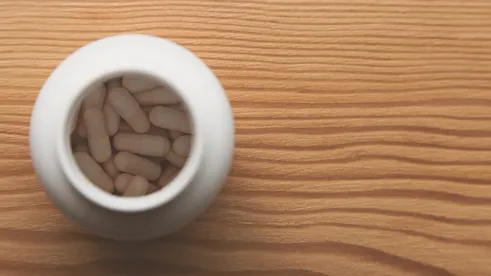On June 15, 2020, the Supreme Court denied a petition for certiorari from the Federal Circuit’s 2019 Eli Lilly & Co. v. Hospira, Inc. opinion affirming infringement under the doctrine of equivalents (DOE). In doing so, the Supreme Court put to rest a more than decade-long dispute over attempts to market a generic version of Lilly’s Alimta®.
At issue in this latest iteration of Alimta ANDA litigation was Lilly’s U.S. Patent No. 7,772,209 (the ’209 patent) claiming an “improved method” for treating patients by administering pemetrexed disodium in combination with folic acid and vitamin B12. As originally filed, however, the asserted claims recited an “antifoliate,” not pemetrexed disodium (itself a species of antifolate). To overcome a prior art rejection during prosecution, Lilly narrowed that claim from administering an “antifoliate” to administering “pemetrexed disodium.” The generic applicants—Hospira and Dr. Reddy’s Laboratories (“DRL”)—developed an alternative salt: pemetrexed ditromethamine.
Lilly filed suit, arguing in part that Hospira’s and DRL’s pemetrexed ditromethamine product infringed under DOE. Hospira and DRL countered, arguing that prosecution history estoppel (PHE) applied to Lilly’s narrowing amendment, thus barring Lilly’s DOE claim, and in any event DOE was limited by the “disclosure-dedication” rule. The district court disagreed, concluding that PHE did not apply because the “reason for Lilly’s amendment was to distinguish other antifolates and was therefore only tangential to pemetrexed ditromethamine.”
In affirming, the Federal Circuit provided an in-depth analysis of the application of DOE, PHE, the “tangential relation” exception to the presumption of PHE, and the disclosure-dedication rule.
The Lilly decision is not the only life sciences opinion with such expansive treatments of DOE and its exceptions. In the last two years the Federal Circuit has handed down numerous similar decisions. See Eagle Pharms. Inc. v. Slayback Pharma LLC (DOE and disclosure-dedication); Galderma Labs., L.P. v. Amneal Pharms. LLC (DOE and argument-based PHE, amendment-based PHE, and vitiation); UCB, Inc. v. Watson Labs. Inc. (DOE and PHE, narrow claiming, vitiation, and ensnarement); Amgen Inc. v. Coherus Biosciences Inc. (DOE and argument-based PHE); Pharma Tech Solutions, Inc. v. LifeScan, Inc. (DOE and amendment-based PHE); Indivior Inc. v. Dr. Reddy’s Labs, S.A. (DOE and disclosure-dedication).
But the most interesting may be yet to come: DOE in compound claim cases. Just such an argument was made in Acerta Pharma B.V. v. Pharmacyclics LLC.[1]
There, Acerta argued that its U.S. Patent No. 7,459,554 (the ’554 patent) covered Pharmacyclics’s Imbruvica® product. Claim 16 of the ’554 patent covers a compound differing from Pharmacyclics’ in two positions of the “core.” Lacking literal infringement, Acerta claimed infringement under DOE. Pictorially, Acerta alleged that its claimed molecule (below left) was equivalent to Pharmacyclics’ (below right):

Unfortunately for the curious, that litigation was dismissed with prejudice in October 2019. But there’s at least one case involving DOE of compound claims: ViiV Heathcare Co. v. Gilead Sciences, Inc.[2] Given the activity of DOE in life sciences, there will likely be more.
With the close scrutiny competitors and courts are giving DOE in life science cases, life science patent practitioners will need to remain aware of evolving arguments when engaged in prosecution, due diligence, and freedom-to-operate analyses.
[1] Acerta Pharma BV v. Pharmacyclics LLC, Civil Action No. 18-cv-00581 (D. Del.).
[2] ViiV Heathcare Co. v. Gilead Sciences, Inc., Civil Action No. 18-cv-00224 (D. Del.).




 />i
/>i

